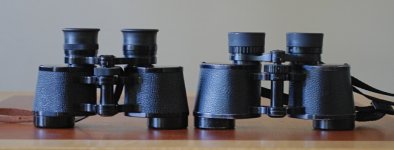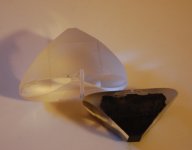Yes, I also noticed the slight discrepancy of the transmission values of allbinos and Gijs. Let's average that and we have a realistic 83 %

Having just acquired an EII I join the club and say: a fine binocular.
I also noticed that the allbinos review omitted the 3 most obvious (besides lack of waterproofness) cons from their list of cons:
- no twist eyecups
- short eye relief
- useless placement of strap bracket
Does allbinos care about ergonomics at all?
To me, all three issues are bothering, but I'll find some work arounds I think and still be able to use and enjoy the binocular.
But I agree now, something like this, slightly modernised, that would be something...








